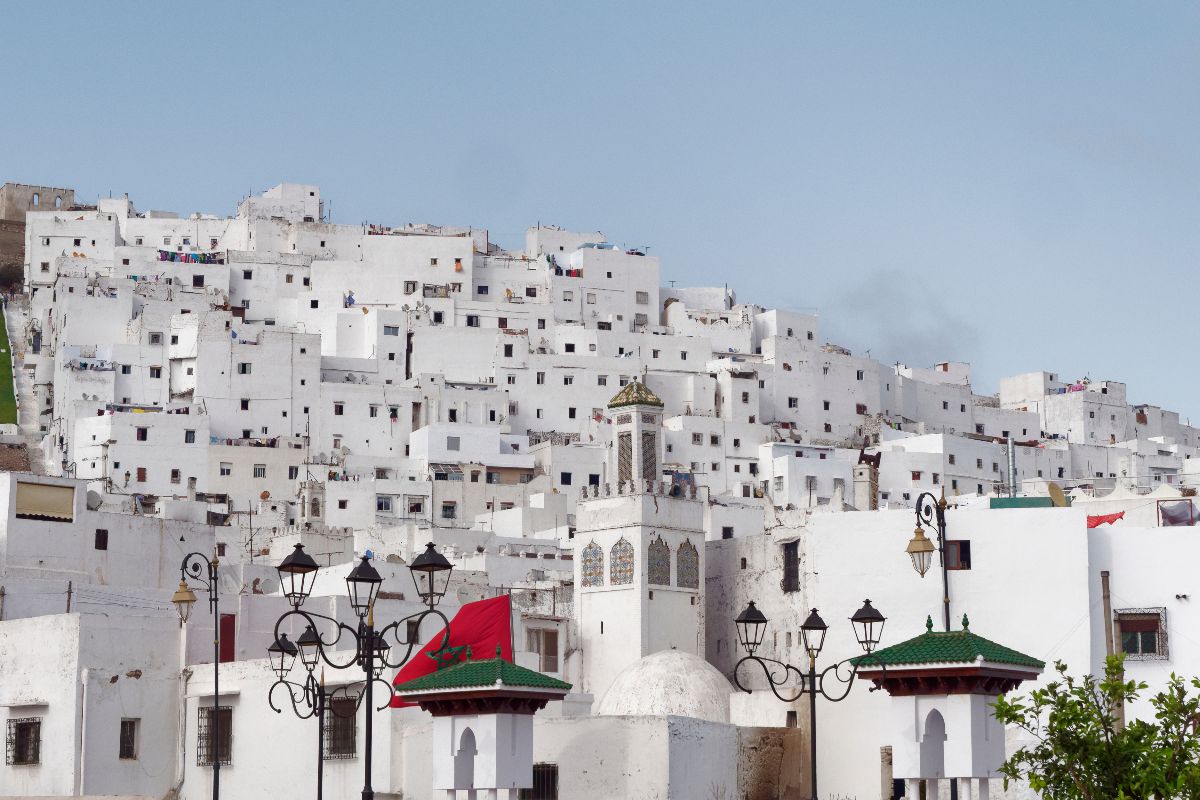Northern Morocco is the area closest to the European continent. For this reason, it is the region chosen by many tourists for a first trip to the country or as an area to start a wider circuit. Its natural beauty and the attractiveness of the cities located here also explain this choice. For this reason, it is also a strategic area for Chic Morocco, as we have many suppliers and a great deal of experience in the field, which we can share with you.
What we understand by ‘northern Morocco’ is, broadly speaking, the territory encompassing the administrative region of Tangier-Tetouan-Al Hoceima, to which we add the Mediterranean coastal strip of the Eastern region (with the capital of Oujda), since other booming tourist destinations are located there.
The Spanish autonomous cities of Ceuta and Melilla, of great historical and social interest, are also located in northern Morocco and can be included in a tour of the area. However, if that is your choice, you will have to take into account the possible border formalities required to cross from one country to the other.
In any case, this zone can also be subdivided into three distinct areas, with common landscape and historical characteristics. For this purpose, we will take as a reference the Strait of Gibraltar, which is the closest point to the European continent (14 km away, at its closest point):
The Moroccan Mediterranean coast is experiencing a great development in recent years and is already a great alternative to the holiday destinations on the European shore of this sea. Its natural beauty has nothing to envy to that of the Old Continent, its climate is similar (or even a few degrees warmer), its services are comparable in terms of quality … but its average cost is significantly lower.
Cities highly oriented to sun and beach tourism, such as Al Hoceima and Saidia, stand out, but protected natural areas can also be added, which will delight travelers more interested in the environment. For example, the Al Hoceima National Park or the Laguna de Mar Chica Natural Park in Nador.
Although the central and southern part of the Moroccan Atlantic coast is conceived as a tourist region in itself, its northernmost area can be included in what we call Northern Morocco, since its places of interest are very close to those of the Mediterranean coast and the Rif.
In this area the cities of Tangier and Asilah stand out, very different from each other but very interesting, each in its own way. In addition, the natural landscapes and protected areas are also a focus of attraction for many visitors, such as the Cape Espartel Reserve and the Caves of Hercules.
The inland territory of northern Morocco is, broadly speaking, a continuation of the natural landscape of southern Spain. And in fact, some areas are part of the so-called Intercontinental Biosphere Reserve of the Mediterranean. Therefore, its geology, fauna and flora are largely the same as those of its European neighbor, since 5 million years ago they formed a single mountain range that was later divided in two by the waters of the Strait of Gibraltar.
One of the most famous destinations in this area is Chaouen, the blue village that dazzles everyone when they visit. The city of Tetouan is another of the great places of interest in this area, which is located just 10 km as the crow flies from the Mediterranean coast. And, of course, there is no shortage of natural areas of great interest, such as the Talassemtane National Park or the Jebel Bouhachem Nature Reserve.

A place of strategic importance since the Romans, it was an international and cosmopolitan city during the twentieth century, to which is added a deep-rooted Arab culture present in its medina. In recent years, it has also managed to reorganize its coastline to enhance its beaches and its port as a focus of tourist attraction.

Known as the Blanca Paloma, it has been declared a World Heritage Site by UNESCO. Not only its historic medina, which extends on the side of a hill, but also the new city, where the Andalusian architectural style is evident, as this city was the capital of the Spanish Protectorate during the twentieth century.

A small city nestled in the Rif Mountains, its historic medina is one of the most picturesque and pleasant places in all of Morocco. Its humble hamlet exudes charm through its whitewashed and blue-painted walls, decorated with flowers and arranged in slopes, small squares, streets with staircases… Undoubtedly, a village that seems to have stopped in time.

Founded by the Spanish army in the context of the Rif War (early twentieth century), today it is a destination heavily focused on sun and beach tourism. Its small sandy beaches and coves between cliffs and cliffs offer a pleasant bathing. It is very well equipped with holiday services and in its surroundings there are numerous hiking trails.

Coquettish coastal town on the Atlantic coast. Its historical medina reflects the vicissitudes of its past: Portuguese walls, 18th century Arab civil and religious architecture and Spanish influence in elements as varied as gastronomy. It has a very artistic soul and its summer festival is one of the most outstanding cultural events in the country.
Fill out the form below to receive a free, no-obligation, tailor-made quote from an agency specialized in Morocco.
Travel agency and DMC specialized in private and tailor-made trips to Morocco.
Mandala Tours, S.L, NIF: B51037471
License: C.I.AN-187782-3